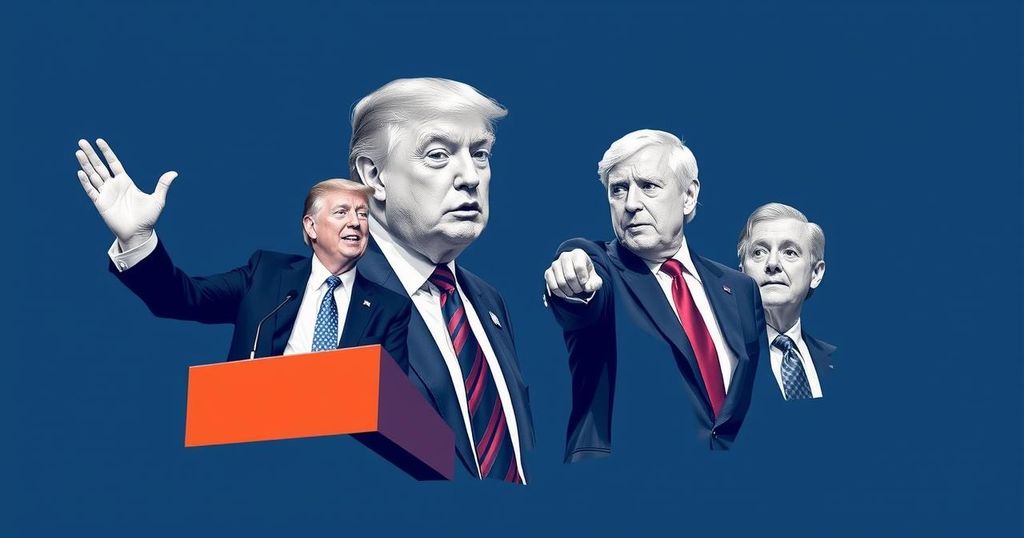Republican Gains and Democratic Challenges Post-Election

After the recent elections, the Republican Party under Donald Trump has gained unprecedented voter support, with 50% believing they represent their interests. Conversely, only 43% feel the same about the Democrats, marking a shift in the political landscape. This has prompted internal discussions within the Democratic Party about strategy and coalition reformation in light of recent electoral setbacks and demographic changes.
The recent political landscape indicates a notable shift as the Republican Party, under the leadership of Donald Trump, has gained a surprising advantage with voters. For the first time since Trump became the GOP’s symbol in 2016, polling data reveals that 50% of Americans feel that the Republican Party represents their interests well, contrasting with only 43% who believe the same of the Democrats. This decline marks a significant moment for the Democratic Party, as it represents their first decline in support in eight years. Many Democrats are grappling with the repercussions of recent electoral outcomes, particularly in the wake of President Joe Biden’s decision to exit the race following a challenging debate, which has exacerbated existing apprehensions about his leadership and age.
As Trump prepares for his impending administration, he remains determined to implement an agenda advocating tax cuts, economic enhancement, effective immigration control, and prioritizing American interests. Despite broad support from Republicans, there is a noticeable dilution of backing across the general electorate. Trump’s strategy appears to capitalize on dissatisfaction with the Democratic Party and the Biden administration, positioning himself as a transformative force. Consequently, Democrats are faced with the urgent need to re-evaluate their coalition as they reflect on their failure to secure essential races and the challenges posed by his rising popularity among demographics previously inclined towards them.
The implications of these electoral outcomes suggest critical examinations within Democratic circles regarding the future direction of their party. Issues like cultural policies and their focus on working-class voters have sparked internal discussions, as many of these individuals have realigned themselves with Trump. While the Republican victories are touted as a strong endorsement for Trump’s policy agenda, the electorate’s broader sentiments remain precarious and heavily influenced by future administrative actions.
Political analysts underscore the volatility of public support, particularly as midterm elections traditionally challenge the incumbent. As political sentiment can shift rapidly, it remains to be seen how voters will respond to the Trump administration’s policies. The real test will emerge not only in the immediate aftermath of the elections but as the new governance unfolds, determining whether voters gravitate towards continued support for Trump and the Republican Party, or whether they will pivot again as they assess the outcomes of his leadership.
In conclusion, the Republican Party’s current advantage signifies a pivotal moment in American politics, with the Democrats facing substantial challenges in maintaining their coalition. The upcoming period will be crucial in determining the effectiveness of Trump’s policies and the electorate’s response to a changing political landscape, shaping the future dynamics between the two major parties.
The political dynamics in Washington, particularly between the Republican and Democratic parties, are experiencing significant transformations post-election. The recent elections highlighted a shift in voter sentiment favoring the Republican Party under Donald Trump’s leadership. As the Democratic Party reflects on its electoral performance and seeks strategies to rebuild their coalition and address voter discontent, the implications of these changes invite scrutiny and analysis. The ability of each party to address voter concerns and present a compelling vision for the future will be crucial in shaping the political landscape in the years to come.
The Republican Party’s resurgence, evidenced by voter support for Trump, highlights significant challenges for the Democrats as they reexamine their coalition and future strategies. The immediate future will reveal whether Trump’s political maneuvers can sustain voter loyalty or if actions taken by his administration will prompt a reassessment among constituents. As such, both parties must navigate a complex and evolving political milieu to effectively engage with American voters and establish lasting majorities moving forward.
Original Source: wgxa.tv







